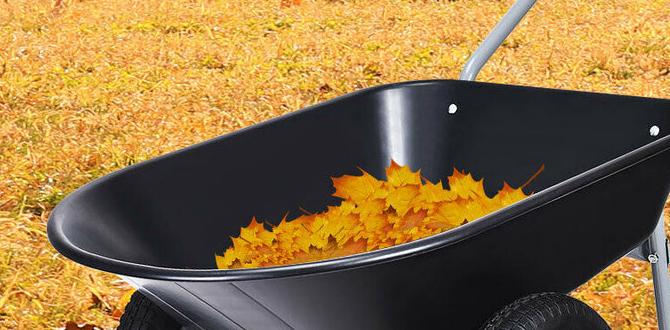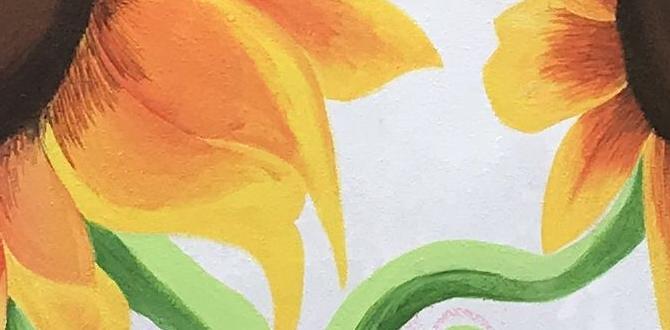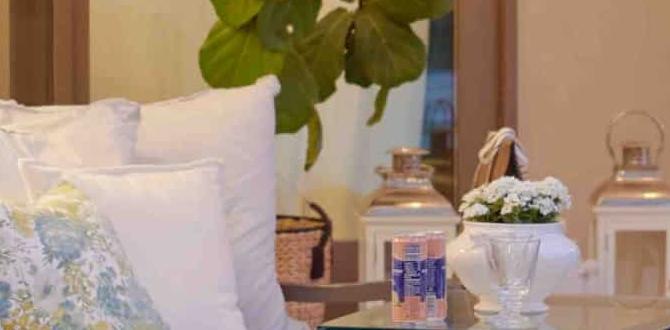Indoor Winter Activities for Kids: Proven Fun that Keeps Little Ones Engaged and Happy All Season Long. Discover simple, creative, and screen-free ideas to beat boredom and make lasting memories without leaving home.
Winter days can feel long, especially when the cold weather keeps us cooped up inside. It’s easy for kids to get restless, and for parents, finding consistently engaging activities can be a real challenge. You want them to have fun, learn, and be creative, but the thought of planning elaborate projects every day can feel overwhelming. Don’t let winter boredom win! We’ve gathered a fantastic collection of indoor winter activities for kids that are not only fun but also easy to set up and enjoy. Get ready to transform your home into a winter wonderland of laughter and discovery!
Embrace the Cozy: Why Indoor Activities Matter
When snowflakes fall and temperatures drop, our instinct is to bundle up and head outdoors. However, the reality for many is that prolonged time indoors becomes a necessity during winter. This isn’t just about avoiding the chill; it’s also an opportunity to foster different kinds of development and connection within the family. Indoor activities allow children to tap into their imagination, develop fine motor skills, and learn new things in a comfortable and safe environment. It’s a chance to slow down, reconnect, and create cherished memories together, proving that fun doesn’t need to wait for sunshine.
Creative Crafts and Artsy Adventures
Winter is the perfect backdrop for a splash of color and creativity. These craft ideas are simple, use common household items, and result in delightful creations that can brighten up your home.
DIY Snow Globes
Bring a touch of snowy magic indoors with homemade snow globes. They are surprisingly easy to make and offer endless customization.
What You’ll Need:
- Small glass jars with lids (like jam or baby food jars)
- Distilled water
- Glycerin (available at most pharmacies or craft stores)
- Glitter (various colors and sizes)
- Small plastic or ceramic figurines that fit inside the jar (e.g., mini trees, animals, snowmen)
- Waterproof glue (like E6000 or a strong craft glue)
- Optional: Hot glue gun for a secure seal
How to Make Them:
- Prepare the Lid: Glue your chosen figurine(s) to the inside of the jar lid. Let it dry completely. Ensure the figurine is securely attached as it will be submerged in water.
- Fill the Jar: Fill the jar about three-quarters full with distilled water. Add a tablespoon or two of glycerin. The glycerin helps the glitter fall more slowly, creating a magical effect.
- Add Glitter: Sprinkle a generous amount of glitter into the water. Experiment with different colors and sizes for unique looks.
- Assemble: Carefully screw the lid back onto the jar, making sure it’s tight. For extra security and to prevent leaks, you can run a bead of hot glue around the rim of the lid before screwing it on.
- Shake and Enjoy: Turn the jar upside down, give it a gentle shake, and watch the “snow” fall!
Salt Dough Ornaments
Salt dough is a classic craft material that’s incredibly versatile. Kids can shape it, bake it, and then paint it to create lasting decorations.
Ingredients:
- 2 cups all-purpose flour
- 1 cup salt
- ¾ cup water (add more if needed to form a dough)
Instructions:
- Mix Ingredients: In a large bowl, combine the flour and salt. Gradually add water and mix until a stiff dough forms.
- Knead: Turn the dough out onto a lightly floured surface and knead for 5-10 minutes until smooth.
- Roll and Cut: Roll out the dough to about ¼ inch thickness. Use cookie cutters or a knife to cut out shapes. Remember to make a small hole at the top of each ornament with a straw or skewer for hanging.
- Bake: Place the ornaments on a baking sheet lined with parchment paper. Bake at 250°F (120°C) for 2-3 hours, or until completely hard. Flip them halfway through.
- Decorate: Once cooled, kids can paint their ornaments with acrylic paints, glitter glue, buttons, or markers.
Indoor Fort Building
Transform your living room into a cozy sanctuary with a DIY fort. It’s a fantastic way for kids to use their imagination and create their own magical space.
Tips for Building the Best Fort:
- Gather Supplies: Collect blankets, sheets, pillows, couch cushions, chairs, and clothespins or clips to hold everything together.
- Structure: Use furniture like sofas, chairs, or even dining tables as the base. Drape fabric over them to create walls and a roof.
- Secure It: Use clothespins or large clips to secure the blankets to furniture and to each other. Tuck in edges where possible.
- Comfort is Key: Fill the inside with soft pillows, sleeping bags, and extra blankets.
- Decorate Inside: Bring in fairy lights, books, drawings, and stuffed animals to make it extra special.
- Activities Inside: Once built, the fort becomes a hub for reading, drawing, playing board games, or just telling stories.
Science and Exploration at Home
Winter is an excellent time to explore the wonders of science without leaving the warmth of your home. These activities are educational, engaging, and often involve a bit of messy fun!
Baking Soda and Vinegar Volcano
This classic science experiment is always a hit! It’s a simple demonstration of a chemical reaction.
Materials:
- Baking soda
- Vinegar
- A small bottle or cup
- A tray or large dish to contain the mess
- Optional: Food coloring for a more dramatic effect
- Optional: Modeling clay or playdough to build a volcano shape around the bottle
Steps:
- Set up: Place the bottle in the center of the tray. If using, mold the clay or playdough around the bottle to create a volcano shape, leaving the opening clear.
- Add Baking Soda: Pour a few tablespoons of baking soda into the bottle. Add a few drops of food coloring if desired.
- Add Vinegar: Pour vinegar into the bottle. Stand back and watch the eruption!
This is a fun way to teach kids about acids and bases and the release of carbon dioxide gas. Learn more about safe home science experiments from institutions like [Science Buddies].
Homemade Slime or Playdough
Making slime or playdough is a tactile and enjoyable science activity. It encourages creativity and lets kids explore different textures.
Easy Playdough Recipe:
- 2 cups all-purpose flour
- 1 cup salt
- 2 tablespoons cream of tartar (helps make it smooth and easier to store)
- 2 tablespoons vegetable oil
- 1-2 cups boiling water (add slowly until desired consistency is reached)
- Food coloring (optional)
Playdough Instructions:
- Combine flour, salt, and cream of tartar in a bowl.
- Add oil and about half a cup of boiling water. Stir with a spoon.
- Gradually add more boiling water, stirring until a dough forms.
- Once cool enough to handle, knead on a floured surface until smooth. Add food coloring during kneading.
Simple Slime Recipe:
- 1 bottle (4 oz) of Elmer’s white school glue
- ½ teaspoon baking soda
- 1 tablespoon contact lens solution (must contain boric acid and sodium borate)
- Food coloring, glitter (optional)
Slime Instructions:
- Pour glue into a bowl.
- Add baking soda and stir well.
- Add food coloring and glitter if using.
- Gradually add contact lens solution, stirring continuously until the slime starts to pull away from the sides of the bowl.
- Knead the slime with your hands until it reaches the desired consistency.
Note: Always supervise young children during slime-making and ensure they do not ingest any materials.
Indoor Obstacle Course
Get the wiggles out with a fun indoor obstacle course. It’s a great way to promote physical activity and problem-solving.
Ideas for Obstacles:
- Crawl under chairs or tables.
- Jump over pillows.
- Walk heel-to-toe along a line of tape on the floor.
- Throw beanbags or rolled-up socks into a laundry basket.
- Spin around a designated number of times.
- Balance a book on your head while walking a short distance.
- Do a certain number of jumping jacks or squats.
- Weave through a line of cones (or stuffed animals).
Set up a timer for an extra challenge, or just let them flow through it at their own pace. The goal is movement and fun!
Kitchen Capers: Baking and Cooking Fun
Winter weather is the perfect excuse to spend time in the kitchen. Baking and simple cooking projects are not only delicious but also teach valuable skills.
Decorate Sugar Cookies
Bake a batch of simple sugar cookies (or use store-bought ones) and let the kids go wild with frosting, sprinkles, and edible glitter.
Tips for Cookie Decorating:
- Simple Frosting: Mix powdered sugar with a little milk or water and a drop of vanilla extract until it reaches a spreadable consistency.
- Variety of Toppings: Offer different types of sprinkles, colored sugars, mini chocolate chips, and even small candies.
- Tools: Provide offset spatulas, small spoons, or even pastry bags with simple tips for more intricate designs.
- Theme: Consider a winter theme – snowflakes, snowmen, or warm mittens!
Homemade Pizzas
Let each child create their own personal pizza. This is always a crowd-pleaser and allows for individual creativity.
What You’ll Need:
- Pre-made pizza crusts, English muffins, or pita breads
- Pizza sauce
- Shredded cheese (mozzarella, cheddar, etc.)
- Toppings: chopped vegetables (peppers, onions, mushrooms), pepperoni, cooked ham, olives, etc.
How to Do It:
- Preheat your oven according to the pizza crust instructions.
- Give each child a base. Let them spread their sauce and sprinkle their cheese.
- Allow them to choose their favorite toppings.
- Bake until golden brown and the cheese is bubbly.
“Edible Art” with Fruit and Veggies
Turn healthy snacks into a creative project. Challenge kids to arrange fruit slices, berries, and veggie sticks into fun characters, animals, or landscapes.
Ideas:
- Fruit Caterpillars/Snakes: Use grapes or small melon balls threaded onto a skewer or arranged in a line.
- Veggie Animals: Broccoli florets for trees, carrot sticks for legs, cucumber slices for bodies, bell pepper triangles for ears.
- Funny Faces: Use apple slices or cucumber rounds as a base, with berries, banana slices, and seeds for features.
This encourages healthy eating habits while also being a fun, artistic endeavor.
Learning Through Play: Educational Activities
Winter is a natural time to focus on learning, and play is the most effective way for children to absorb information. These activities blend education with fun.
Storytelling and Puppet Shows
Encourage imagination and language development by creating stories or putting on puppet shows.
How to Get Started:
- DIY Puppets: Use old socks, paper bags, or even draw characters on cardstock and attach them to popsicle sticks.
- Story Starters: Begin a story with a prompt like, “Once upon a time, in a land covered in snow…” and let each person add a sentence or two.
- Puppet Show Stage: Drape a blanket over a table or couch to create a simple stage.
- Themes: Discuss winter animals, holidays, or create entirely new fantastical worlds.
Board Games and Puzzles
These classic activities are fantastic for developing critical thinking, strategic planning, and fine motor skills. They also provide excellent opportunities for family bonding.
Benefits of Games and Puzzles:
- Problem-solving skills
- Turn-taking and patience
- Memory improvement
- Concentration and focus
- Learning rules and strategy
Choose age-appropriate options and enjoy dedicated family time away from screens. For ideas on choosing the best games, check out resources from the [National Association for the Education of Young Children (NAEYC)].
Indoor Scavenger Hunts
Scavenger hunts are exciting and can be tailored to any interest or learning objective. Create clues that involve rhyming, problem-solving, or finding specific items.
Tips for Creating a Scavenger Hunt:
- Choose a Theme: Winter objects, colors, shapes, or even letters of the alphabet.
- Write Clues: Make them age-appropriate. For younger kids, use pictures or simple descriptions. For older kids, use riddles or rhyming clues.
- Hide the “Treasures”: The final prize can be a small toy, a special snack, or the next activity.
- Example Clue: “I have a face and hands but no arms or legs. What am I?” (Answer: A clock – the next clue is hidden near the clock.)
Build With Blocks or LEGOs
Construction toys are invaluable for developing spatial reasoning, creativity, and fine motor skills. Encourage kids to build anything they can imagine – winter castles, cozy houses, or even fantastical vehicles.
Challenge Ideas:
- Build the tallest tower possible.
- Create a home for a favorite stuffed animal.
- Design a vehicle that can carry a small toy car.
- Build a scene from a favorite book or movie.
Sensory Play for Little Ones
Sensory play is crucial for early childhood development, helping children explore the world through their senses. These activities are engaging and comforting, perfect for a chilly day.
Sensory Bins
Fill a container with various materials and small objects for a tactile exploration experience.
Sensory Bin Fillers:
- Water Beads: These expand in water and offer a unique squishy texture.
- Rice or Dried Beans: Dye them with food coloring for added visual appeal.
- Shaving Cream: A fun, temporary sensory experience.
- Snow Substitute: Mix baking soda with conditioner or water for a cool, powdery “snow” that holds its shape.
- Pom-poms or Cotton Balls: Soft and easy to grasp.
Add-ins: Small scoops, cups, toy animals, figurines, or letters to find within the filler.
Indoor “Snowball” Fight
Mimic the fun of an outdoor snowball fight with soft, indoor-friendly alternatives.
Options:
- Cotton Balls: Lightweight and soft, great for younger children.
- Rolled-up Socks: A classic for a reason – they have a bit more weight and fly well.
- Tissue Paper Balls: Scrunch up squares of tissue paper into balls.
Clear a safe space, set some rules (like no





